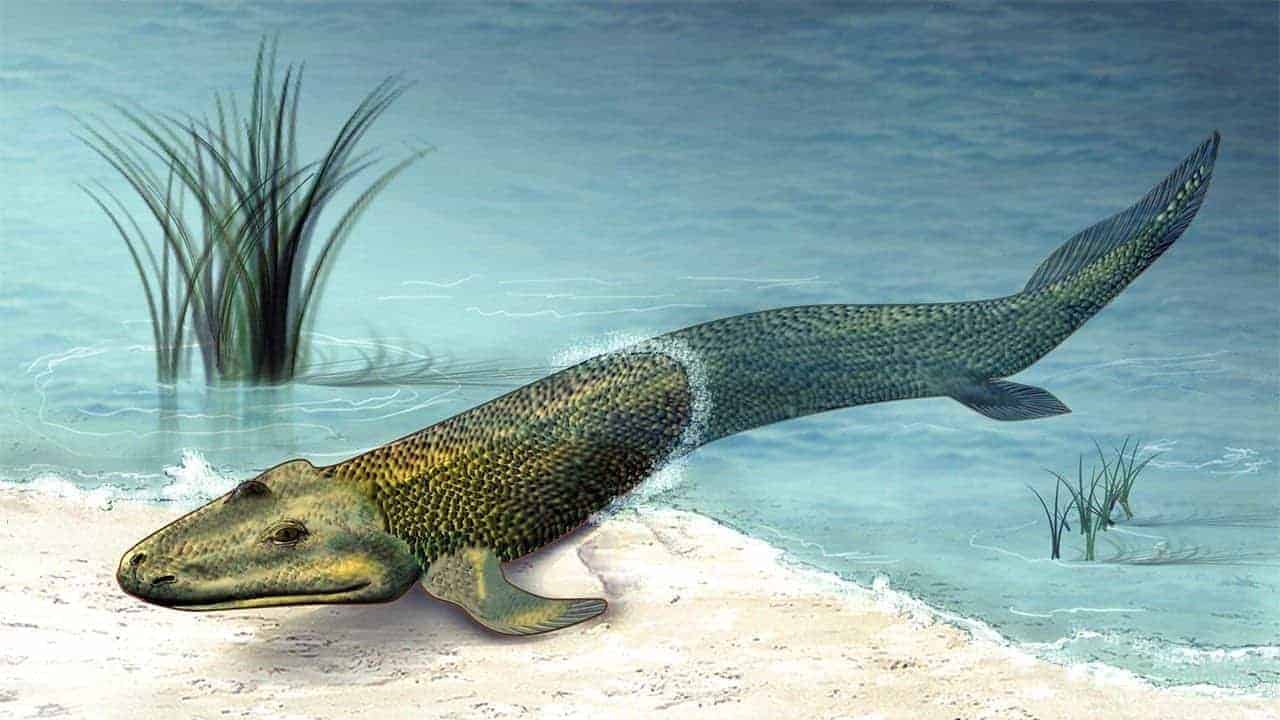
Sailing by moonlight
you wallow in the opulence
of your oceanic abode.
An illusion of permanence
concealing the current
that now bathes you
in shameful nakedness.
Plucked from the waves.
Abandoned by the sea
in shallow pools of half-life,
you struggle for air
with every passing tide
a seasoned reminder
of a present past.
Surging spray
falls with remorse
upon flaking skin;
dead to the possibilities
of this liminal existence
you flip flop
towards the palisades
of your ancestral home.
A chance explosion
frees you from
your rocky prison,
but with sea in sight
you no longer feel
its aching weight.
Tentatively you stretch
out a limb
and turn your back
to the water,
never to return.

This poem is inspired by recent research, which has found that large tides may have driven the evolution of fish towards life on land.
The Devonian period is a period of geological time that occurred on Earth from 416 million to 358 million years ago. It is sometimes called the ‘Age of Fishes’ because of the immense diversification of fish that took place during this period. One such group to emerge was the bony fish, the earliest of which were the first animals to evolve lungs; but exactly what it was that triggered this evolution and subsequent adaptation to life on land, is uncertain. One theory suggests that it might have been caused by particularly large tides, which transported fish from the sea and caused them to become isolated in small pools. These challenging habitats may then have driven the evolution of lungs and, later on, the transformation of fins into front and hind legs, so that the fish could make their way to more frequently replenished pools closer to the sea.
In order to test this tidal theory, researchers have used a mathematical model of the tidal system to simulate, in detail, the tides that would have occurred on Earth during the Early Devonian period. Data on the positions of the continents, the distance of the Moon, the duration of Earth’s day, and the physical properties of seawater were fed into the model. These simulations revealed that during this period large tides occurred across the planet, with a difference of more than four metres in sea level between high and low tide being reported in the area near what is now South China. Given that fossil records indicate that it was specifically around South China that bony fish originated, this new research lends further credence to the possible role that tides may have played in the evolutionary development of life on Earth.
from ScienceBlog.com https://thepoetryofscience.scienceblog.com/1581/tidal-evolution/?utm_source=rss&utm_medium=rss&utm_campaign=tidal-evolution
No comments:
Post a Comment